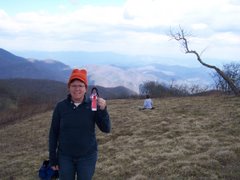Post by Rebecca Neet
When I began designing my TTEC unit, I kept coming back to the idea of historical landmarks along the AT, but I also wanted to connect my idea to place based learning. We are lucky in our area to have the Housatonic River running through not only our town, but the neighboring towns north and south as well. So soon it wasn’t just about the historical landmarks along the AT, but the historical landmarks along the river as well, the same historical landmarks that tell the history of our area. I began immediately developing partnerships with the local historical societies; Housatonic Heritage, the Sheffield Historical Society and the Great Barrington Visitor’s Center. From there our initial outing was born; a two part field trip within downtown Great Barrington. Working with Housatonic Heritage and spending some time taking the Great Barrington walking tour myself, we developed a walking tour along the Great Barrington Riverwalk and a quest for my students of local historical monuments within Great Barrington. The outcome…success! The students loved working on the quest, which challenged them to view buildings and historical markers as a means to answer their clues. In addition, they came away with an excitement to show their families all they had learned about the Riverwalk. Those who were unable to finish the final quest challenge continued it in class the following day and wouldn’t stop until they had discovered the final answer.
When I began designing my TTEC unit, I kept coming back to the idea of historical landmarks along the AT, but I also wanted to connect my idea to place based learning. We are lucky in our area to have the Housatonic River running through not only our town, but the neighboring towns north and south as well. So soon it wasn’t just about the historical landmarks along the AT, but the historical landmarks along the river as well, the same historical landmarks that tell the history of our area. I began immediately developing partnerships with the local historical societies; Housatonic Heritage, the Sheffield Historical Society and the Great Barrington Visitor’s Center. From there our initial outing was born; a two part field trip within downtown Great Barrington. Working with Housatonic Heritage and spending some time taking the Great Barrington walking tour myself, we developed a walking tour along the Great Barrington Riverwalk and a quest for my students of local historical monuments within Great Barrington. The outcome…success! The students loved working on the quest, which challenged them to view buildings and historical markers as a means to answer their clues. In addition, they came away with an excitement to show their families all they had learned about the Riverwalk. Those who were unable to finish the final quest challenge continued it in class the following day and wouldn’t stop until they had discovered the final answer.
That being the first step, the students then chose landmarks
from along the river to research for our
“museum exhibit” which will be hosted
through the Sheffield Historical Society and possibly the Berkshire
Museum. While researching, and to
further tie the AT and the Housatonic to their history, I then worked to take
all 45 fifth graders out onto the trail to hike. Traveling in homeroom groups of 15, the
students were challenged to view the hike as explorers seeing this land for the
first time. They made observations, took
notes, shared ideas and then discussed upon our return whether or not this land
would be good to colonize. It was
impressive to see all my students, writers and non-writers alike making notes
and discussing with one another their ideas while we hiked the 3.5 miles over
June Mountain and along the Housatonic.
All in all 43 of the 45 students of varying abilities and needs were able
to hike and everyone enjoyed it!
What now you might ask.
Well, my next step is to help the students develop their exhibit pieces
which will include an exhibit tag, a landmark pamphlet and a multi-media
piece. The students will then exhibit
those pieces for the community. And this
spring, the students will create a 5-10 piece exhibit on the landmarks along
the AT. This will, again, include all
the pieces described above, but will focus on those historical landmarks along
the AT. It will be interesting to see
just how the program develops over the coming months. I will keep you posted!




No comments:
Post a Comment